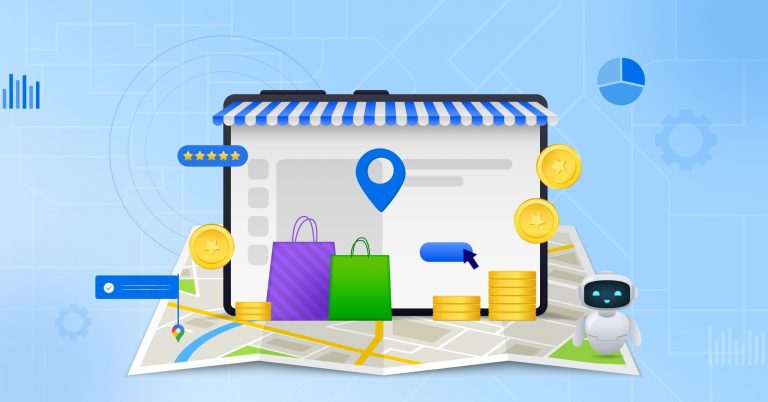Manual processes and fragmented tools can help your retail brand achieve only limited growth.
As your store count rises, so do the complexities—keeping location data accurate, managing listings across platforms, responding to customer reviews, and understanding performance at a granular level become harder to sustain manually.
If you’re operating at scale, these issues don’t just slow things down—they impact your search visibility, customer experience, and, ultimately, your revenue.
That’s why forward-thinking retail teams like yours are turning to location-level AI and automation.
By centralizing your data and layering it with intelligent insights, you’re not just solving operational inefficiencies—you’re gaining complete visibility, unlocking real-time opportunities, and setting the foundation for smarter, more scalable local growth.
In theory, it should be simple—list your store details online and keep them updated. But in reality, when you’re managing hundreds or thousands of locations, it’s a logistical nightmare.
Store hours shift, phone numbers change, new branches open, others close, and before you know it, your data is scattered across platforms, directories, and internal systems.
Even worse, your customers might be seeing incorrect information when they search for your store online, leading to missed opportunities, poor experiences, and damaged trust.
This is more than just a data issue. It’s a visibility issue. And for your brand, that means it’s a growth issue too.
Addressing the complexity of managing visibility at scale requires more than reactive fixes or isolated tools. For multi-location brands, the path forward lies in adopting a cohesive, data-led approach—one that not only unifies store information but also delivers timely, location-specific insights that drive business outcomes.
This is where two foundational capabilities come into play:
Centralized data management is no longer a nice-to-have; it’s essential for any retail brand with multiple touchpoints.
With a platform like SingleInterface with local cloud capabilities, you can manage every detail about each store—addresses, business hours, images, payment methods, customer reviews—all from one centralized dashboard.
Here’s what that means for you:
Having the right data in place is step one. The next step? Making that data work harder—and smarter.
That’s where AI-driven tools help you understand not just what’s happening across your locations but why.
AI at the local level can even automate your review responses, ensuring timely, relevant engagement across hundreds of stores without the manual workload.
By integrating external data sources—like weather conditions, local events, or even trending conversations on social media—you can further enrich your visibility plan and make smarter hyperlocal decisions.
Related read: Simplifying Google Business Profile with AI

Once your data is structured and your insights are clear, the next step is activation—enter location-based and proximity marketing.
Let’s say your analytics show that a group of stores sees a spike in foot traffic before long weekends. With this knowledge, you can roll out location-specific offers, adjust store hours, or boost Google Posts in those regions, without touching each listing manually.
With SingleInterface, you can do this using tools like:
Switching from manual processes to AI-led automation doesn’t just reduce overhead—it gives you capabilities you didn’t have before.
Take SingleInterface’s AI-driven call analytics offering, for instance. It transcribes and categorizes incoming calls so you can uncover customer intent, monitor call outcomes, and even trigger personalized remarketing—all from conversations you’re already having.
You can also use this data to deliver more personalized customer journeys.
Predictive models help you recommend the right products or services at the right time. Prescriptive tools suggest the next best action, whether it’s launching a promotion or updating store content.
Related read: Learn AI-Powered Hyperlocal Marketing
Your customers expect relevance, accuracy, and convenience—everywhere, all the time.
They rely on search engines, maps, and digital listings to decide where to shop, eat, or get services. If your store isn’t showing up correctly, your competitors are just a tap away.
Investing in Location-level AI isn’t just about staying in the game—it’s how you take the lead. Brands using these tools are already seeing:
Store visibility isn’t something you check off once and forget. It’s a dynamic, continuous process—especially in today’s fast-changing retail landscape. But with the right mix of centralized data, and AI automation, it becomes a true growth driver for your brand.
When everything’s connected, every location becomes easier to find, easier to manage, and more profitable.
Ready to take control of your store visibility?
Explore how SingleInterface can help you simplify your operations, sharpen your insights, and scale smarter—one location at a time. Book your demo today!